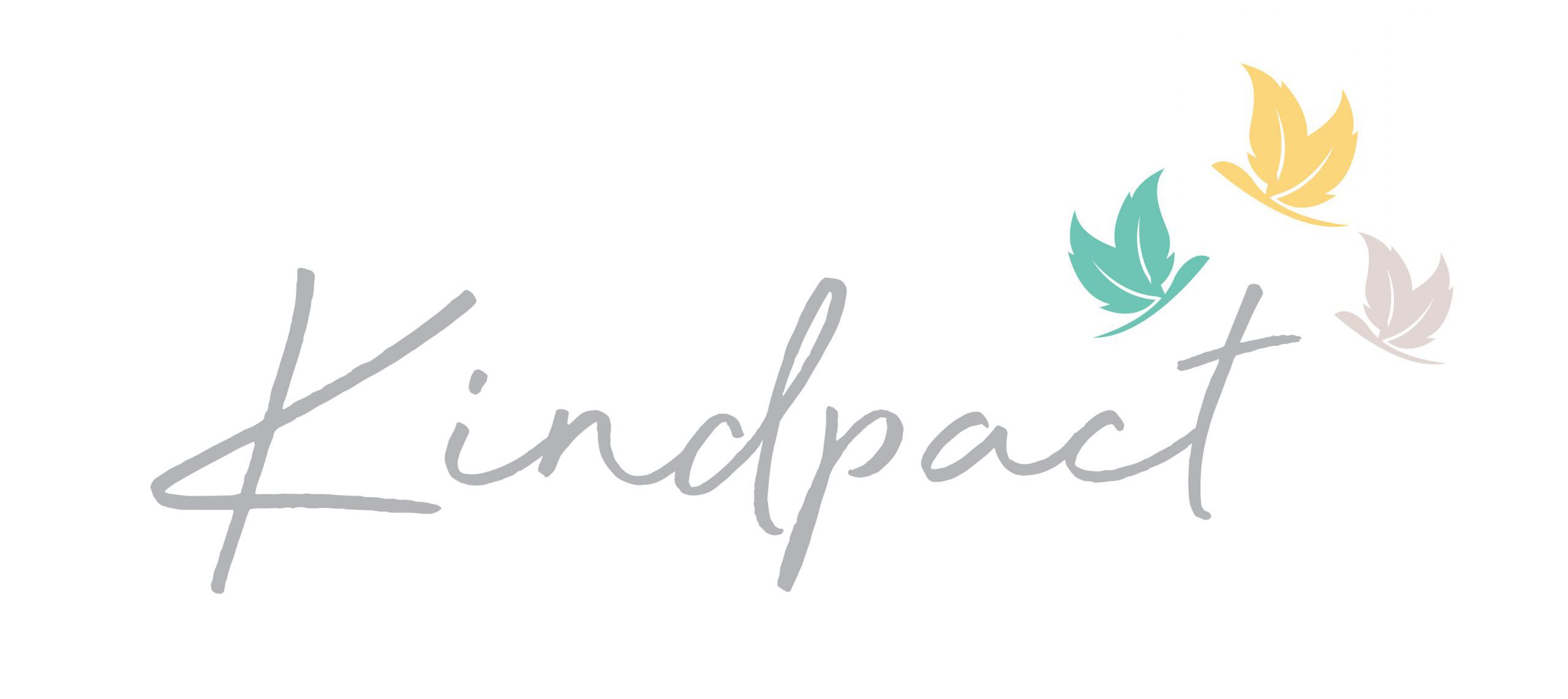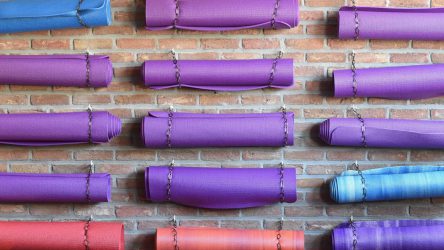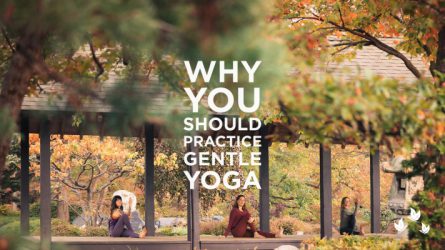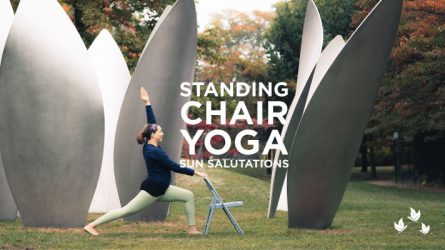“There is always a light within us that is free from all sorrow and grief, no matter how much suffering we may be experiencing.” For Patanjali, yoga is a path towards becoming aware of this light by silencing the disturbances of the mind. It is a thorough, well-structured technique that we can use in order to achieve mind-body unity and enter heightened states of realization. There are many kinds of yoga that all retain this same ultimate goal. There is yoga through asana and breathing practices (most commonly practiced today), service, wisdom, the study of scriptures, ritual and devotion. Getting started with yoga can be daunting. While you may not be able to enter a yoga studio right now or have access to one, you can still begin and sustain a strong yoga practice. In this article, we guide you through the various aspects of how to start yoga at home.
The Benefits of Yoga
Here is a non-exhaustive list of the studied benefits of yoga asana, meditation and breathwork:
Yoga balances the nervous system to promote well-being
In yoga asana and pranayama, we excite the sympathetic nervous system (SNS) or the body’s stress response by going into uncomfortable postures or unusual breathing patterns. We then try to calm the stress response by bringing our focus to the breath, activating the parasympathetic nervous system. Over time, our nervous system gets restructured to react with less fear and stress even in situations beyond our mat.¹
A daily yoga practice improves cardiovascular health
Asana and pranayama slowly lengthen the breath which increases oxygen absorption by the cells, enhancing the function of internal organs and the skin. Better circulation brought about by yoga flows like Surya Namaskara and inversions lowers the risk of heart disease and cardiac arrest. Age-related deterioration in cardiovascular function has been found to be slower in long-term practitioners of yoga than the control group. ²
Yoga postures reduces and treats chronic disease and pain
Yoga balances flexibility with strength, improving the overall integrity of the body. Regular stretching releases and prevents chronic pain especially in the back and neck. Muscular and joint strength prevents the onset of chronic conditions like osteoporosis and arthritis. ¹
Yoga promotes respiratory function
Asana and pranayama boost lung function leading to better oxygenation of the organs and muscular strength. ³
Yoga improves symptoms of depression and PTSD
Yoga increases the levels of serotonin and cortisol, the absence of which is found to be the leading cause of depression. It also inhibits the activity of monoamine oxidase, an enzyme responsible for breaking down neurotransmitters in the body. ⁴
Choosing the right yoga style
If you want to start yoga, it’s important to know what format to begin with. There are so many different styles of yoga and if you’re a beginner you may struggle to decide which one is right for you. The first step is to think about why you want to do yoga and how you think it will benefit you. Once your intention is clear, go through our guide below to help you choose the right fit. You can shop around with a few different styles before you pick the one that works best for you. However, while this guide focuses on asana, you may want to begin your yoga journey with pranayama or meditation or bhakti which is perfectly fine.
- Ashtanga Yoga is right for you if you want a fast-paced, structured, challenging practice that give you an athletic, confident body and leaves you feeling energetic and fresh.
- Vinyasa Flow is an off-shoot of Ashtanga yoga which will give you the strength and flexibility of Ashtanga without having to do the same sequence every day. There are not many seated yoga poses for beginners in this practice so if you’re looking for a slower practice you may want a slower practice like Hatha or Yin Yoga.
- Hatha Yoga is perfect for beginners since it keeps you in postures for longer, building foundation and strength while teaching you correct alignment. Typically there are many easy poses for beginners in Hatha Yoga.
- Kundalini/Kriya Yoga is a well-rounded practice combining asana with breath-work and chanting that can be deeply transformative, helping you release emotions and access heightened states of awareness.
- Yin Yoga is right for you if you’re looking for something relaxing and restorative to help you enter a meditative state or use as a supplement to your regular physical activity. This style has yoga poses for flexibility. Beginners may be surprised how challenging these simple postures can be.
- Hot Yoga is perfect for you if you want to sweat, detoxify your system and develop a strong, toned body.
- Chair Yoga: Through the use of a chair, yoga sequences are practiced with support. This yoga practice is good for beginners, seniors, and those with varying degrees of mobility and energy.
How to set up your home practice space
It may be challenging to set up a home practice space that offers the same kind of sanctuary available in a yoga studio. But with a little effort, it is possible and you may even begin to prefer the solitude and comfort of a home practice. Choose a space that is committed to your yoga practice. This can be any part of your home that is quiet and free from distraction during practice hours. Try to choose an area that is naturally lit. Clean and declutter to promote clarity and focus. You can light incense, candles and bring in objects that calm you. The gift of a home practice is that you can customize your space based on your needs. Make sure you do not bring other activities into this space like your work or your phone. This is so that your body and mind get conditioned to associate this space only with your inner practice (much like what happens with a yoga studio). As a result, you will begin to notice a change in your frame of mind just as you enter this space.
You may also want to start with yoga supplies for beginners. Traditional beginner yoga supplies include a yoga block, strap, yoga mat, and mexican blanket. Yoga bolsters can also be supportive.
How to find the best beginner-level yoga classes from home
Whereas earlier you may have been restricted only to yoga studios in your locality, with the pandemic, you now have access to teachers all over the globe. This can be as confusing as it is exciting. Try to first become clear on the kind of guidance you require and how much you’re willing to spend on it.
For those looking for free offerings, there’s an abundance of beginner yoga classes on YouTube where you can customize your practice and try out a wide range of styles. There are also many subscription-based websites and apps that expose you to a wide range of teachers and styles for all levels. However, sooner or later you will feel the need to connect to a teacher personally to guide you through this complex journey, in which case you can proceed to join an online class. It is much harder for a teacher to watch you and check your postures through a screen, so ensure you find someone who gives clear, thorough instructions and does not take on too many students at a time. You may need to try out different platforms and teachers before you find one that works for you. Be patient with yourself, trust in the practice and allow your body to guide you.
While the practice of yoga may look nothing like it did a few months ago, there has never been a better time to start a yoga journey. It is one of the most effective tools available to look into ourselves and become aware of the things we have to release in order to achieve more understanding and acceptance. When everything is as strange and uncertain as it is now, it is easy to get lost in panic and despair. A practice that brings you back to the joys of movement and breath can help you not only stay afloat but thrive in the moving chaos of our time.
References:
- Woodyard, Catherine. “Exploring the therapeutic effects of yoga and its ability to increase quality of life.” International Journal of Yoga (2011): 49-54.
- Harvard Medical School. Yoga – Benefits Beyond the Mat. February 2015. August 2020.
- Yamamoto-Morimoto, Kuniko, et al. “Positive Effects of Yoga on Physical and Respiratory Functions in Healthy Inactive Middle-Aged People.” International Journal of Yoga (2019): 62-67.
4. Sengupta, Pallav. “Health Impacts of Yoga and Pranayama: A State-of-the-Art Review.” International Journal of Preventive Medicine (2012): 444-458.



